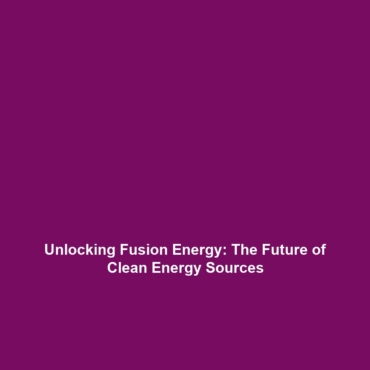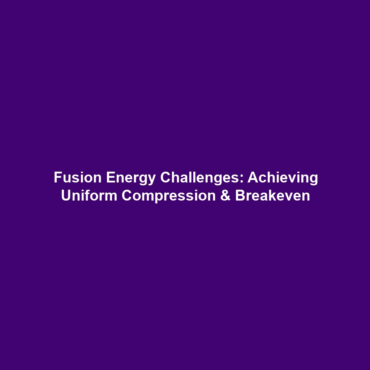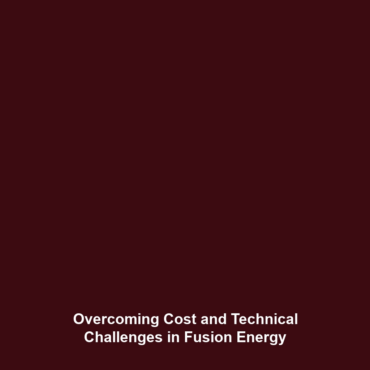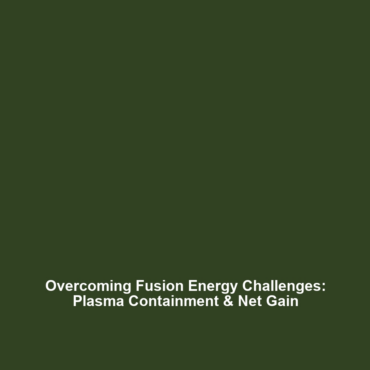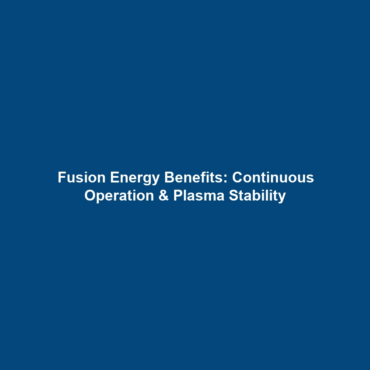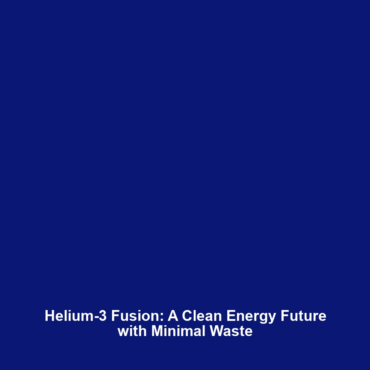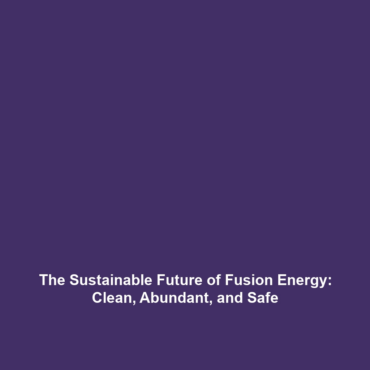Clean Energy Source: A Key Component of Fusion Energy
Introduction: The quest for sustainable and clean energy sources is undoubtedly one of the most pressing challenges of our time. Within this context, fusion energy emerges as a promising solution, offering the potential for virtually limitless power generation without the adverse environmental impacts associated with fossil fuels. Clean energy sources derived from fusion technology aim to mitigate climate change and enhance energy security globally. As the world continues to grapple with energy demands, understanding the significance of clean energy sources in fusion energy is paramount.
Key Concepts of Clean Energy Source and Fusion Energy
Clean energy sources can be defined as forms of energy that do not contribute to pollution or greenhouse gases. Within the realm of fusion energy, several key principles relate directly to the development and implementation of clean energy sources:
- Nuclear Fusion: The process of combining light atomic nuclei to form heavier nuclei, releasing large amounts of energy in the process.
- Fuel Sources: Fusion primarily uses isotopes of hydrogen, such as deuterium and tritium, which are abundant in seawater, making them a sustainable fuel source.
- Safety and Waste Management: Unlike fission, fusion reactions produce minimal long-lived radioactive waste, making it a safer alternative for energy generation.
Applications and Real-World Uses
The applications of clean energy sources within fusion energy are vast and varied. Here are some significant examples:
- Power Generation: Fusion energy has the potential to supply electricity to millions of homes and industries without harmful emissions.
- Advanced Propulsion Systems: Fusion can be harnessed for space travel, providing propulsion systems for long-distance missions beyond the solar system.
- Research Applications: Fusion technologies enable scientists to study fundamental physics, including the behavior of matter under extreme conditions.
Understanding how clean energy sources are used in fusion energy is essential for comprehending their potential impact on global energy strategies.
Current Challenges of Clean Energy Source in Fusion Energy
Despite the promise of clean energy sources, several challenges remain that hinder the widespread adoption of fusion energy:
- Technological Limitations: Current technologies have yet to achieve the necessary conditions for sustained fusion reactions.
- High Initial Costs: The development and construction of fusion reactors require significant investment, which can be a barrier to entry.
- Regulatory and Policy Issues: There is still uncertainty regarding regulatory frameworks that govern the operation of fusion facilities.
Future Research and Innovations in Clean Energy Source
The future of clean energy sources in fusion energy lies in ongoing research and technological breakthroughs:
- ITER Project: The International Thermonuclear Experimental Reactor aims to demonstrate the feasibility of fusion as a large-scale energy source by the mid-2020s.
- Advanced Materials: Research into new materials that can withstand the extreme conditions inside a fusion reactor is crucial for improving efficiency.
- Compact Fusion Reactors: Innovations aim to create smaller, more efficient fusion reactors that can be deployed for localized energy needs.
Conclusion
In summary, clean energy sources play an integral role in the development of fusion energy, offering promising solutions for a sustainable future. As research progresses and challenges are addressed, the potential for clean energy derived from fusion could reshape our energy landscape. For those interested in exploring more about energy technologies, consider reading about Nuclear Fission, Renewable Energy Sources, and the Path to a Sustainable Future.
